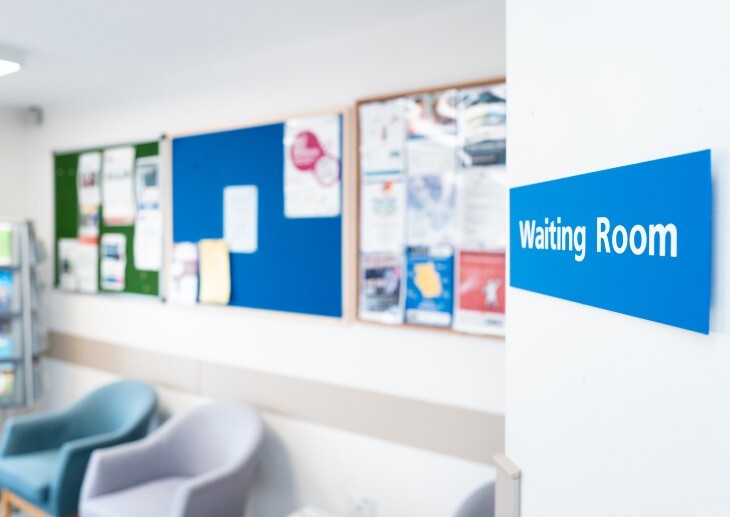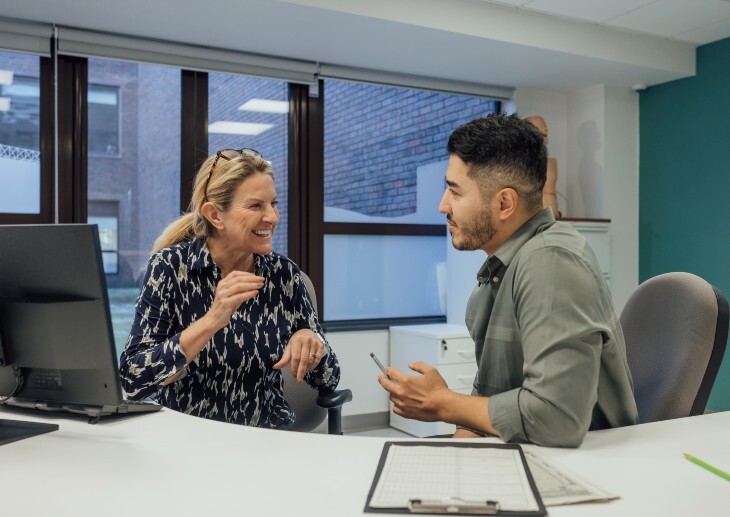Dr Rosemary Croft
Reading GP, Tilehurst Medical Centre
The idea for the commissioning group's community spinal service started over two years ago while GPs were part of practice-based commissioning. Orthopaedic referrals were high across the Berkshire West patch, including our own local area, a total of 3,400 referrals a year for back pain. This accounts for more than a third of the total trauma and orthopaedic referrals.
Dr Rosemary Croft
Reading GP, Tilehurst Medical Centre
The idea for the commissioning group's community spinal service started over two years ago while GPs were part of practice-based commissioning. Orthopaedic referrals were high across the Berkshire West patch, including our own local area, a total of 3,400 referrals a year for back pain. This accounts for more than a third of the total trauma and orthopaedic referrals.
Dr Rosemary Croft
Reading GP, Tilehurst Medical Centre
The idea for the commissioning group's community spinal service started over two years ago while GPs were part of practice-based commissioning. Orthopaedic referrals were high across the Berkshire West patch, including our own local area, a total of 3,400 referrals a year for back pain. This accounts for more than a third of the total trauma and orthopaedic referrals.
At the time, all back-pain patients were referred to the Royal Berkshire Hospital and seen by an orthopaedic consultant. Initial assessment in the orthopaedic clinic was conducted by Extended Scope Physiotherapists (ESPs), who had been trained by the orthopaedic team and whose clinical skills were highly trusted.
The ESPs provided an excellent service but it was also evident that we were paying for a consultant referral when there was scope to provide a more cost-effective service that could bring care closer to patients and also hopefully reduce the waiting time – which was almost three months.
Although these possibilities seemed self-evident, it was important for us to make sure our GP colleagues were behind us. We started by presenting the problem to them and exploring alternative suggestions such as triaging referral letters, or relying on GPs to decide if the patient should be referred to the community service instead of the hospital.
Another orthopaedic service had already tried the triage-letter option with varying results, and an incredible amount of time was needed to obtain sufficient information to make a reasonable triage decision. We agreed that it would be safer and simpler to have everybody triaged following a face-to-face assessment. This meant that all referrals had to go through the community service; only referrals that were complicated or might need surgery were referred to the consultant clinic.
Sometimes we GPs are resistant to change. So we were aware that we might not be able to persuade colleagues to refer to the new service on the basis of cost reduction alone, but we believed that if the aims and benefits to patients were understood there would be little resistance, and this has been the case.
Setting up the service was a joint effort between ourselves and our consultant and physiotherapy colleagues. We found our orthopaedic consultant colleagues very receptive to change and they could see the positives of what we wanted to achieve and so were very supportive. Tackling the huge number of referrals could give them the time they needed to concentrate on cases where their specialism was most appropriate.
It was important to us that the service would not only be of a high quality but that it would also be safe. Having the expertise of the orthopaedic team was helpful in achieving this. They continue to see patients with any 'red flag' symptoms bypassing the community-based service so as to avoid unnecessary delays.
Our radiology colleagues were concerned that ESPs ordering MRIs would lead to a significant increase. But enabling the ESPs to order MRI scans when necessary eased the pathway and meant that a second opinion could be given with the MRI scan results. Significantly, the number of MRIs ordered by the service was fewer than expected and the radiology department was happy with the quality and quantity.
The ESP reviews the results with the orthopaedic surgeons in a weekly session for case discussion. This is paid for by the community service and means that if the patient may require surgery they will now see the orthopaedic team, having already had an MRI scan.
[[RC_1]]
In the new system these patients are now seeing the orthopaedic team with their MRI quicker than they used to. Patients appreciate the speed of access – waiting with pain is never easy.
Likewise, our physiotherapy colleagues were keen to try new ways of working. Many GPs are not musculoskeletal experts, and we rely on their expertise and advice. We have 15.8 whole-time equivalent (WTE) staff working in the community spinal service across the patch.
The most difficult area of this whole project has been the need to curtail the use of facet joint injections, which were a very large existing expense. This was an area where we faced some GP opposition. We came to the view that, since the National Institute for Health and Clinical Excellence (NICE) questioned these injections as a cost-effective treatment for low back pain of up to one year's duration, the numbers would need to be significantly reduced.
Many GPs have found this difficult to understand, especially when they have had patients who have previously received effective pain relief from an injection. I always respond individually to any concerned GP who writes in, to help them understand the rationale and explain the benefits of the alternatives we have put in place.
One of the alternatives is our back-rehabilitation class. Patients are offered a six-week course that covers a wide range of issues including posture, exercises and helping people to explore and understand the psychology of pain. One of our ideas was to offer these in sports centres, aiming to shift the focus onto wellbeing rather than illness.
We are still learning. Those who attend these classes give very positive feedback, but there have been far fewer attendees than we anticipated. For some groups with more complex pain and poor mobility, we have adapted the classes to add a 'Community Pain Management Series.' The flexibility of the new service can only be a good thing and is a real example of how these services are sometimes evolutionary, especially if you want to be responsive to patient feedback. For some patients, a six-week course is too much of a commitment and we need to have alternative options.
We launched the service in September 2009. By March this year, 1,757 patients had been treated. We've found that just 17% of patients have been referred to a consultant (compared with 100% previously) and that only 35% were referred for an MRI scan. Because of the extra staff we have put in place and the hiring of the facilities from which the ESPs work, the cost savings are still being fully realised. But already the community service has enabled the following reductions:
- 1,800 fewer first trauma and orthopaedic outpatient appointments.
- 3,600 fewer follow-up trauma and orthopaedic appointments.
- 1,000 fewer facet joint injections.
Developing a service like this one isn't something we've achieved overnight. From inception to launch, it took us around two years. We started thinking it would be for our commissioning group only, but we have ended developing it for all four groups that form part of Berkshire West, covering 500,000 patients.
Now it's here, our patients benefit from care that is:
- Quicker.
- More reactive to their needs.
- Local.
- Gives them a greater choice of treatments.
- Saves cost for the local health economy.
- Uses consultant time where it is most needed.
- Physiotherapy colleagues have the chance to run a service that stretches their expertise and responsibilities, as well as gives them access to diagnostics.
We have all witnessed what a difficult condition back pain can be for our patients. It can sometimes close life down for individuals, dominating their lives. If we can get our patients seen more quickly, in a setting that's closer to their homes, there's a hope that the pain and lack of mobility will be better managed and not become chronic.
I feel very positive about the future of clinically-led commissioning. Projects such as these are showing it is possible to improve patient care while saving costs, and it has been a very good experience to get to know and work together with our secondary care and allied-health colleagues.





